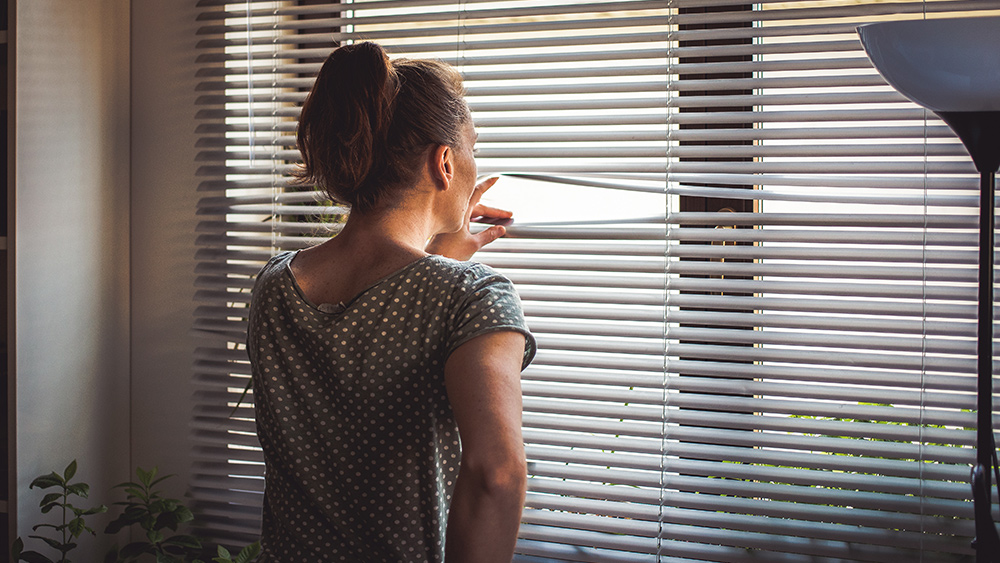
The emergence of the delta variant gave governments around the world the perfect excuse to intensify coronavirus (COVID-19) vaccination campaigns and impose stricter health and safety protocols. Politicians and public health officials are saying the same things right now: Get vaccinated or suffer from restrictions mandated by the government.
"We want to avoid lockdowns at all costs, but that means we're going to have to do some other things that won't necessarily be welcomed by people," said Dr. Francis Collins, director of the National Institutes of Health (NIH).
Those unwelcome things include requiring vaccinated people to wear masks at indoor parties, Collins said, citing an outbreak in Massachusetts in which many of the infected people were fully vaccinated. (Related: Delta variant of the coronavirus will be the new excuse for tyrannical health measures.)
Children may also need to wear masks in schools so that they're protected from being a source of spreading – something Collins acknowledged is not popular with kids or parents. "But if we want to avoid more severe outcomes that might lead to more extreme measures like lockdowns, we know what to do. We just need to do it," he said.
Collins noted that the vaccination rates are increasing, partly because of the surge in COVID-19 cases caused by the delta variant.
"People are waking up to this," he said. "That's what desperately needs to happen if we are going to get this delta variant put back in its place because right now it is having a pretty big party in the middle of the country."
As of Aug. 2, the U.S. had vaccinated 70 percent of adults with at least one dose of the coronavirus vaccine, Cyrus Shahpar, the White House's COVID-19 data director, said on Twitter. That was the goal the Biden administration originally set for July 4.
More than 816,000 doses of COVID-19 vaccine were administered across the U.S. on the last day of July. It marked the fifth straight day that more than 700,000 doses were administered, according to the Centers for Disease Control and Prevention (CDC).
Countries with low vaccination rates turning to lockdowns to spread fear?
In countries with relatively low vaccination rates, governments are imposing hard lockdowns for extended periods.
Australia had fully vaccinated just over 4 percent of its adult population when New South Wales Premier Gladys Berejiklian announced a two-week lockdown in the Greater Sydney region on June 26. That number jumped to 16.4 percent on Thursday, Aug. 5, but lockdowns were still tormenting residents in different parts of the country.
Sydney recently reported its worst day of the COVID-19 pandemic with five deaths and a record rise in locally acquired infections. The weeks-long hard lockdown appeared to have made things worse in New South Wales.
More lockdowns in Australia
Still, authorities announced a one-week lockdown beginning Aug. 5 in the region surrounding the state's second-largest city of Newcastle, 140 kilometers (87 miles) north of Sydney, after six cases were reported there.
That will place an additional 615,000 people under lockdown, raising the total in New South Wales under strict stay-home restrictions to 6 million people out of 8 million in the state, or about a quarter of Australia's population.
"Our strongest focus is getting to the bottom of how the disease was transmitted and introduced into Newcastle," New South Wales Chief Health Officer Kerry Chant told reporters, as most cases were still being detected in Sydney, the state capital and Australia's largest city.
There were 259 new COVID-19 cases in Sydney out of 262 in all of New South Wales, setting daily records for the city and the state. In the state of Queensland, whose capital Brisbane is under lockdown, another 16 COVID-19 cases were also reported.
Meanwhile, the state of Victoria started a week long lockdown on Aug. 5. People in Victoria were ordered to stay home unless they are doing essential work, buying food, getting exercise, receiving or providing healthcare or getting a COVID-19 vaccine.
With the new restrictions in place, some 13 million people across Australia's three largest cities of Sydney, Melbourne and Brisbane are now in lockdown. (Related: Locked down under: Nearly 12 million Australians forced to stay at home to comply with yet more covid hysteria.)
Millions forced to stay at home in Philippines
In the Philippines, Metro Manila was also placed under enhanced community quarantine (ECQ) for two weeks beginning Aug. 6. The ECQ is the country's term for its strictest lockdown. Metro Manila, which spans 16 cities, is home to some 13 million people.
Some provinces were also placed under ECQ, albeit for 10 days only, while others were placed under modified enhanced community quarantine (MECQ) or general community quarantine (GCQ) with heightened restrictions.
As of Aug. 5, the Philippines has fully vaccinated 10.3 million people – 16.3 percent of its approximately 63 million adult population.
Follow Pandemic.news for more news related to the coronavirus pandemic.
Sources include:
Please contact us for more information.




















